Exploring Grappling: What Are the Best Grappling Martial Arts?
Grappling is a strategic game of control played out on the mat. Grappling martial arts like Brazilian Jiu-Jitsu, wrestling, judo, and sambo all have different tactics and techniques that they use to gain victory. In this article, we are going to dive into the essential grappling techniques and concepts used in BJJ, Judo, wrestling, and sambo. We will explore how these grappling martial arts have become so effective, and by the end of it, you may be able to choose one that could be right for you.
The Art of Grappling: Understanding its Role in Martial Arts
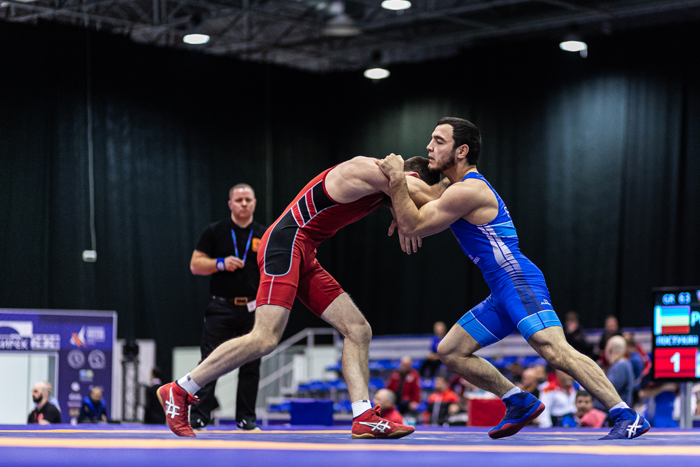
Grappling is not just a simple set of techniques; it is a key aspect of many martial arts that use strategic control. Many martial arts have their own unique grappling techniques; this means the ideas are similar but the way they are used is different. Grappling techniques are usually designed to enable a smaller fighter to overcome a stronger opponent. If you’re looking to practice grappling martial arts, these are some of the key characteristics:
- Dictating the pace and position of the fight
- A smaller person overcoming a larger opponent
- Redirecting energy, using body mechanics, and leverage
- Controlling positions to defend against attacks
This focus on control distinguishes grappling martial arts from other martial arts that rely on striking techniques. Striking martial arts like kickboxing aim to damage the opponent with punches and kicks, whereas grappling martial arts focus on gaining dominant positions where they can apply chokes, joint locks, or simply control the opponent until a victory is gained.
Grappling martial arts like Brazilian Jiu-Jitsu, Judo, wrestling, and sambo have become the base for many mixed martial arts fighters. Professional fighters now realize that if you can control where the fight goes, you can ultimately control the outcome of the fight. But make no mistake, grappling is a game of thinking, understanding body mechanics, and how to leverage people’s energy against them.
Engaging in grappling training is not only great preparation for ground fighting, but it also creates a mindset that is several moves ahead of the competition. An analogy to a game of chess, but only played with human limbs.
Brazilian Jiu-Jitsu: Ground Dominance and Submission Mastery
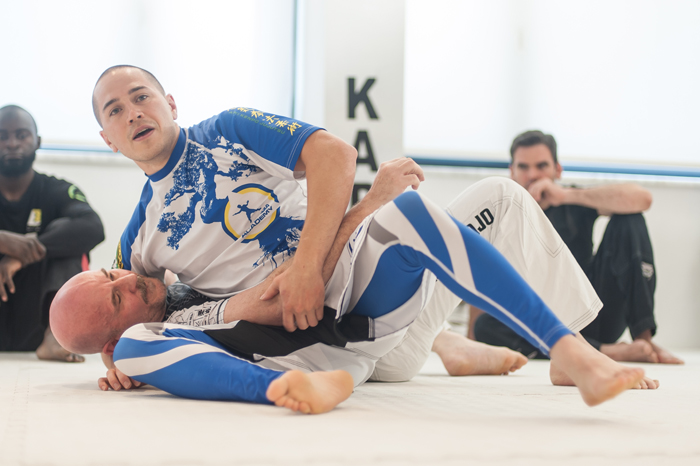
The primary goals of the Brazilian Jiu-Jitsu, or BJJ for short, are submission techniques and ground fighting. This grappling martial art is a chess match of human anatomy, where practitioners use positions like the closed guard, half guard, and mount to strategically gain control over their opponents. In Brazilian Jiu-Jitsu, position dominance is the gateway to various types of submissions. Once they have control, they will use a variety of submissions, like arm bars, chokes, and even odd submissions like toe holds, to submit their opponent. Nearly everything has potential for a submission in BJJ, which means defending against submissions can be extremely difficult too.
The true power of BJJ is demonstrated through its vast array of chokes and joint locks aimed at submitting the opponent. Techniques like the triangle choke, guillotine choke, and armbar are not simple movements. Although submissions like this are difficult to perform, when applied correctly, they can be used to submit even the strongest, untrained opponent. BJJ practitioners are masters at gaining positions through hip bumps and butterfly sweeps; they use this to transition from an inferior position to a more dominant one. Fighting for a ground position like this makes BJJ a very effective form of self-defense. In general, trained BJJ practitioners find it very easy to gain positions over untrained opponents, especially on the ground.
Adaptability is the strongest aspect of BJJ, as practitioners can easily adapt to different body types and unpredictable scenarios. Whether in a self-defense situation or on the mats of a jiu jitsu competition, BJJ’s techniques allow for an appropriate and controlled escalation of force, enabling practitioners to neutralize threats effectively. Unlike some other martial arts classes, BJJ teaches its practitioners that size is not an issue and often does not follow weight classes when practicing. Instructors often remind BJJ practitioners to prioritize technique over strength or size. This adaptability has made BJJ a key part of mixed martial arts and a popular choice for self-defense.
Judo: The Gentle Way of Throwing and Pinning
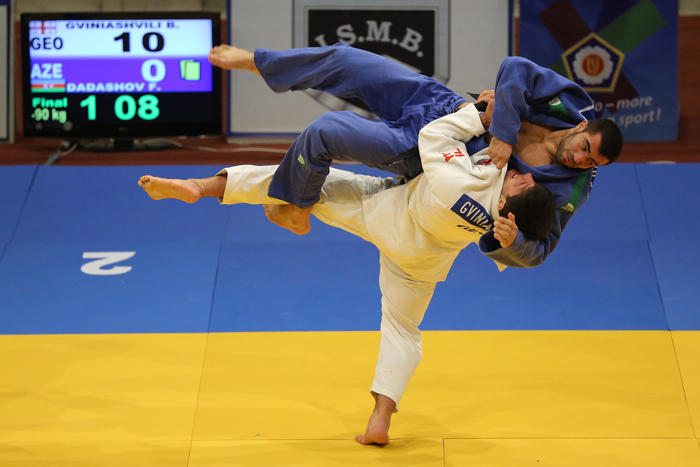
Judo, known in Japanese as “the gentle way,” is a grappling martial art that practices the efficient use of energy to unbalance and throw opponents. Judo practitioners wear a gi, a uniform that is ideal for gripping and pulling an opponent, it can be manipulated to perform a variety of throws. Grabbing the uniform is legal in Judo, and practitioners practice techniques aimed at using the GI to their advantage. These techniques are a variety of throws and maneuvers, which include moves like Seoi-nage, an over-the-shoulder throw that is traditionally used in Judo, sweeping techniques such as O-soto-gari, and more risky throws like the Tomoe-nage. Judo has many more moves, but these are just a few of the commonly practiced techniques.
But the art of judo does not end with the throw; it continues to the ground, where judo players exhibit their ability to control and subdue opponents. Techniques like Yoko-shiho-gatame are used to pin adversaries, while joint locks, such as Ude-hishigi-juji-gatame, apply painful pressure to limbs to secure a submission. Although Judo is not often seen as a ground-fighting martial art, it does permit many kinds of joint locks and submissions, which are rarely seen in competition as they are viewed as risky techniques by practitioners. Ground techniques complement the standing grappling of Judo, making it a martial art of both dynamic takedowns and calculated ground control.
The philosophy of Judo extends beyond just competition; it promotes a sense of discipline and respect that goes beyond the mats. It’s a highly disciplined martial art that teaches Judo practitioners to use precise techniques that are efficient both on the mat and in reality.
Wrestling: Ancient Roots and Modern Techniques
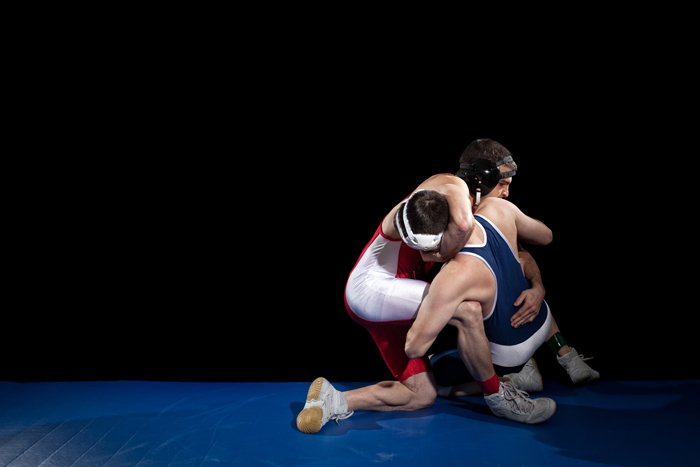
Wrestling is one of the oldest forms of combat, with a rich history and evidence of its existence dating back to ancient civilizations. The sport has roots that date all the way back to the ancient Olympic Games, making it a large part of Greek culture, where it was celebrated for its combative nature. Over centuries, it evolved, garnering support from the Olympic community and many countries around the world, such as the USA, Cuba, Russia, and Iran. These are just a few of the countries where wrestling has become extremely popular.
Modern wrestling is a blend of traditional techniques and evolved strategies. For example, there are various styles of wrestling, such as Greco-Roman and folkstyle. Wrestling’s primary focus is on takedowns, throws, and pins. Moves such as the Penetration Step, Single-Leg, and Double-Leg Takedowns are all essentials in wrestling. These techniques are complemented by maneuvers like the Snap-Down, Whizzer, Switch, Sprawl, and Sit-Out. Wrestling focuses on gaining dominant position and scoring points with throws and maneuvers.
The geographic diversity of wrestling talent is vast, with top wrestlers hailing from nations like the U.S., Russia, and Iran, demonstrating the universal appeal of this grappling art. Wrestling continues to evolve, adapting to the modern era, and it is quickly becoming one of the most popular grappling martial arts.
Sambo: Russia’s Hybrid Grappling System
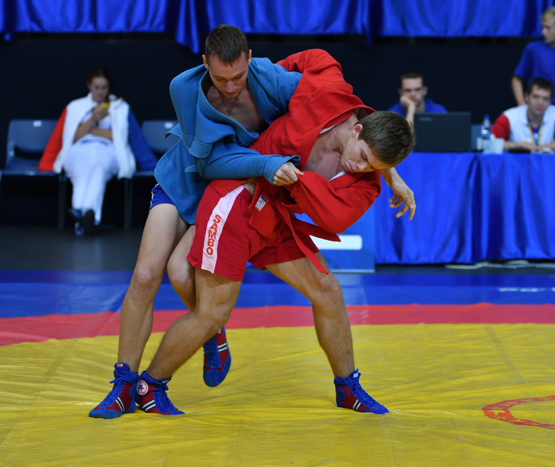
Sambo is a robust Russian martial art and a complete freestyle form of fighting. It was developed in the 1920s to bolster the hand-to-hand combat capabilities of the Soviet Red Army. Sambo was designed as a blend of judo and wrestling, as both the pioneers of Sambo, Vasili Oshchepkov and Viktor Spiridonov, were also practitioners of judo and wrestling. It was officially recognized in 1938, when Sambo became the martial art of the Soviet Union.
This grappling system is divided into two main disciplines: sport sambo and Combat Sambo, each with its own set of specialized rules. Combat sambo, in particular, expands the grappling repertoire with the inclusion of striking techniques like punches and kicks, making it a comprehensive combat style. The versatility of Sambo, with its array of takedowns, sweeps, submissions, and strikes. This makes it a very effective form of freestyle fighting, comparable to MMA. It draws inspiration from judo and various wrestling techniques, along with boxing and even some BJJ techniques. Although it sounds a lot like mixed martial arts, sambo does vary in how it is practiced, and overall, it is more wrestling-focused than MMA.
Its rigorous training and the aliveness of its techniques ensure that practitioners are well-equipped to handle a myriad of combat situations. Today, we are seeing Sambo become more and more popular, as famous MMA fighters such as Khabib Nurmagomedov and Islam Makhachev both have Sambo backgrounds. This has elevated Sambo and shown the practicality of the martial art.
Choosing the Right Grappling Style for You
The process of choosing the right grappling martial art comes down to accessibility and personal goals. If the martial arts academy is nearby or you feel like it is easily accessible, you are more likely to attend training; likewise, if your personal goals match the goals of the academy, it will help motivate you to learn more. A style that complements one’s natural abilities and aligns with their goals will likely lead to a more rewarding and effective grappling experience.
Grappling martial arts can be very challenging but very rewarding to learn. The moves are complex and not easy to learn quickly, but this makes it rewarding as it makes you realize what you have performed took dedication and practice. Ideally, engaging in at least two intense grappling training sessions per week will help you excel in your skills.
The journey to mastering a grappling art is a blend of self-knowledge and dedicated practice. It is not just about learning techniques but about developing a mindset that thrives in the face of challenge and embraces the discipline needed to excel in any chosen grappling style.
The Impact of Grappling on MMA and Combat Sports
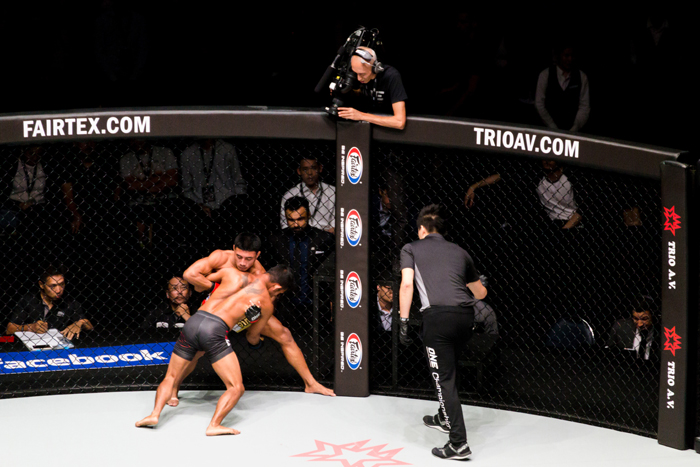
The ascent of grappling to the forefront of mixed martial arts (MMA) and combat sports is undeniable. Fighters with a strong grappling foundation are capable of achieving takedowns, controlling fights on the ground, and securing submissions. Grappling martial arts like wrestling and Brazilian Jiu Jitsu are the two most popular styles to learn for MMA fighters. This means most MMA fighters will need to learn one or both of these disciplines. Fighting in MMA without learning some type of grappling is very difficult, and not many of the high-level fighters are able to fight without some grappling knowledge.
Grappling’s influence on MMA extends beyond the octagon, as fighters continuously adapt and blend various grappling disciplines to remain competitive. This has led to an evolution within the grappling ecosystem, as many MMA fighters adapt their grappling training to suit the freestyle form of fighting that mixed martial arts is. An example of this would be a boxing combination blended with a takedown at the end of it.
Early UFC events featuring the Gracies and their Brazilian Jiu Jitsu skills showcased the effectiveness of grappling in MMA. Witnessing the rise of MMA champions who have a grappling base, such as Henry Cejudo, Kamaru Usman, Khabib Nurmagomedov, Islam Makhachev, Daniel Cormier, and Jon Jones, has pushed more MMA fighters to focus heavily on practicing grappling martial arts.
Grappling in mixed martial arts is now seen as as important as Muay Thai and boxing. The result is a vibrant fusion of grappling martial arts and traditional striking techniques, giving rise to fighters who are not just specialists in one discipline but well-rounded MMA fighters with diverse fighting styles. The most popular grappling martial arts practiced in MMA are:
- BJJ
- wrestling
- judo
- sambo
These are the main grappling martial arts practiced in MMA; however, MMA does not limit techniques, so different MMA fighters might practice different fighting styles. Overall, though, these are often seen as the most effective by the MMA community.
Frequently Asked Questions
What is considered grappling?
Grappling is the practice of using gripping or grabbing techniques to gain a dominant position, score takedowns, or submit an opponent. Martial arts like Brazilian Jiu Jitsu, Judo, and wrestling are all grappling-based.
What is a grappling technique?
A grappling technique is wrestling-focused, such as a double leg takedown or a ground-fighting BJJ submission like an arm bar. Submission techniques aim to make the opponent tap out using joint locks or chokeholds. It is different from striking disciplines as it involves gripping the opponent in a way to score points or end the fight.
What makes grappling different from other martial arts?
Grappling is different from other martial arts because it emphasizes leverage and control to gain dominance over an opponent, focusing on ground fighting and techniques to submit or control the opponent using their energy against them. This sets it apart from martial arts that rely on striking techniques.
How can Brazilian Jiu-Jitsu be effective against larger opponents?
Brazilian Jiu-Jitsu is effective against larger opponents because it emphasizes leverage, adaptability, and strategic management of space, enabling practitioners to control and submit opponents regardless of size differences.
Summary
Each grappling style offers a unique set of philosophies and techniques that can be used for sport, self-defense, or personal growth. Whether it’s the ground dominance of Brazilian Jiu-Jitsu, the dynamic throws of Judo, the ancient techniques of wrestling, or the versatile freestyle approach of Sambo, grappling arts provide skills that enhance both physical and mental fortitude. It’s clear that the world of grappling is not just about physical performance but a journey of continuous learning, adaptation, and self-discovery.










Pingback: Ssireum: The Exciting Art of Korean Traditional Wrestling
Pingback: A Guide to the Popular Art of Folkstyle Wrestling
Pingback: The Ultimate Guide to Oil Wrestling in Turkey
Pingback: The 7 Best Striking Martial Art Styles You Need to Know!
Pingback: Kushti: The Rise of the Mud Wrestler, a Great Indian Tradition